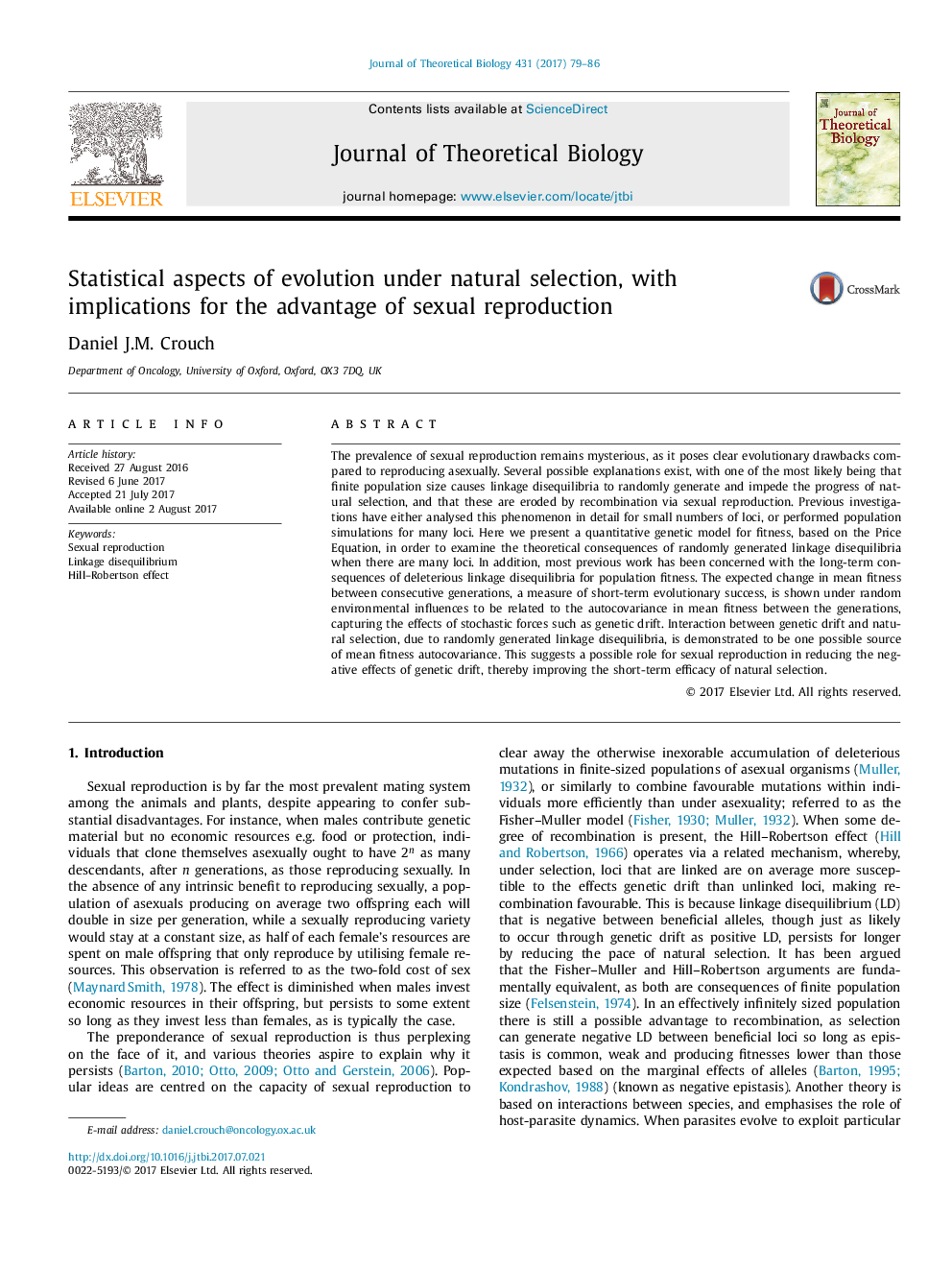ترجمه فارسی عنوان مقاله
جنبه های تحلیلی تکامل در انتخاب طبیعی با دلایل استفاده از بازتولید جنسی
عنوان انگلیسی
Statistical aspects of evolution under natural selection, with implications for the advantage of sexual reproduction
| کد مقاله | سال انتشار | تعداد صفحات مقاله انگلیسی |
|---|---|---|
| 130351 | 2017 | 8 صفحه PDF |
منبع

Publisher : Elsevier - Science Direct (الزویر - ساینس دایرکت)
Journal : Journal of Theoretical Biology, Volume 431, 27 October 2017, Pages 79-86
ترجمه کلمات کلیدی
تولید مثل جنسی، عدم همبستگی پیوند، اثر هیلاری روبرتسون،
کلمات کلیدی انگلیسی
Sexual reproduction; Linkage disequilibrium; HillâRobertson effect;
ترجمه چکیده
شیوع تولید مثل جنسی باقی می ماند اسرار آمیز است، زیرا این مسئله در مقایسه با بازتولید غیرمعمول، نقایص تکاملی روشن را نشان می دهد. چند توضیح احتمالی وجود دارد، با یکی از احتمالا این که جمعیت محدودی باعث ایجاد اختلال در ارتباط می شود به طور تصادفی ایجاد و مانع پیشرفت انتخاب طبیعی می شود و این از طریق بازسازی جنسی توسط نوترکیبی تخریب می شود. تحقیقات پیشین این پدیده را به صورت جزئی برای تعداد کمی از لوک ها تحلیل کرده یا شبیه سازی جمعیت را برای بسیاری از آنها انجام داده است. در اینجا ما یک مدل ژنتیکی کمی برای تناسب اندام را براساس معادله قیمت ارائه می دهیم تا بررسی عواقب نظری تقارن ناهماهنگی ایجاد شده به صورت تصادفی زمانی صورت می گیرد. علاوه بر این، بیشتر کارهای قبلی مربوط به عواقب دراز مدت عدم تعادل سازنده آسیب پذیری برای آمادگی جمعیت است. تغییرات پیش بینی شده در میانگین تناسب بین نسل های متوالی، اندازه گیری موفقیت تکاملی کوتاه مدت، تحت تأثیرات تصادفی محیط زیستی است که با اتووکاریانس در میانگین تناسب بین نسل ها ارتباط دارد و تأثیر نیروهای تصادفی مانند راندگی ژنتیکی را نشان می دهد. تعامل بین رانش ژنتیکی و انتخاب طبیعی به علت اختلافی که به صورت تصادفی تولید شده است، به عنوان یک منبع امکان پذیر می باشد. این نشان می دهد نقش احتمالی بازتولید جنسی در کاهش اثرات منفی رانش ژنتیکی، در نتیجه بهبود کارایی کوتاه مدت انتخاب طبیعی.

